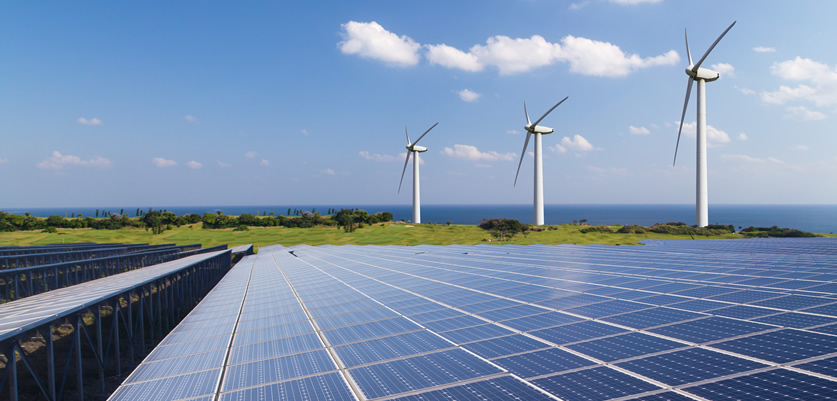Renewables Account for a Third of Global Power Capacity

A third the world’s power capacity is now made up of renewable energy, according to the latest research from the International Renewable Energy Agency (IRENA).
According to the data, total renewable energy generation capacity hit 2,351GW by the end of 2018. Around half of that, or 1,172GW, was made up of hydropower. Wind energy made up 564GW, while solar power made up 480GW. The remainder was made up of 121GW of bioenergy, 13GW of geothermal energy and 500MW of marine energy.
Last year, 171GW of renewable energy capacity was added to power grids across the world, a 7.9% increase from 2017. The majority of this growth, 84%, came from wind and solar energy alone.
Solar energy capacity increased by 94GW, with 64GW of this coming from new installations in Asia. Meanwhile, wind energy saw an increase in capacity of 49GW, with 20GW of this coming out of China. In total, Asia was the largest contributor to the increase in renewable energy capacity in the world, with 105GW, or 61% of new installations occurring in the region.
Total renewable energy capacity in Asia rose by 11.4% in 2018. However, this wasn’t the region with the highest growth, as Oceania saw a 17.7% increase last year. Africa saw the third highest level of growth, with an increase of 8.4%.
“Through its compelling business case, renewable energy has established itself as the technology of choice for new power generation capacity,” said Adnan Z. Amin, director-general of IRENA. “The strong growth in 2018 continues the remarkable trend of the last five years, which reflects an ongoing shift towards renewable power as the driver of global energy transformation.
“Renewable energy deployment needs to grow even faster, however, to ensure that we can achieve the global climate objectives and sustainable development goals. Countries taking full advantage of their renewables potential will benefit from a host of socioeconomic benefits in addition to decarbonising their economies.”
However, although renewable energy capacity has been increasing rapidly in recent years, capacity from non-renewable sources has also been increasing. Non-renewable generation capacity has increased by 725GW in Asia since 2010. In the Middle East, it has also increased by 100GW over the same period. In Europe, North America and Oceania, however, non-renewable generation capacity has decreased by around 85GW overall.
Worldwide, non-renewable generation capacity has grown by an average of around 115GW each year since 2000.
The UK’s National Grid has recently said they are preparing for the system to be fully operated from renewable electricity sources by 2025. And just last month, the Energy Minister, Claire Perry, claimed that offshore wind power will account for over 30% of the country’s electricity supply by 2030.
Fintan Slye, Electricity System Operator director at National Grid, said: “By 2025, ESO will have transformed the operation of Great Britain’s electricity system and put in place the innovative systems, products and services to ensure that the network is ready to handle 100% zero carbon.”
Read on our blog

With the government poised to implement tough new measures to...

Budget broadband provider TalkTalk has been notifying customers via email...

A year-long investigation by charity Citizens Advice has revealed a...

Education Secretary Nadhim Zahawi has announced a new commitment to...
